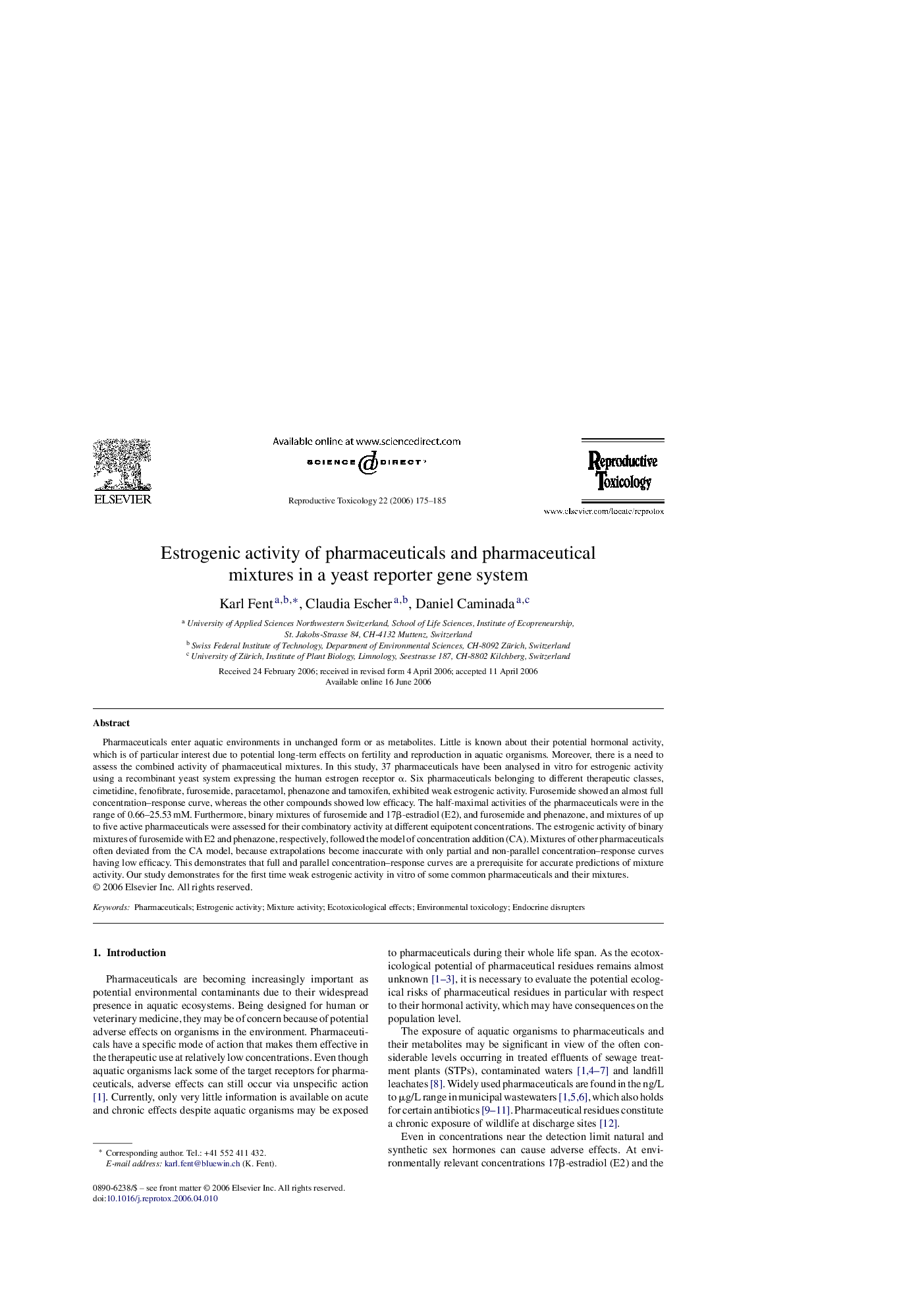| Article ID | Journal | Published Year | Pages | File Type |
|---|---|---|---|---|
| 2594870 | Reproductive Toxicology | 2006 | 11 Pages |
Pharmaceuticals enter aquatic environments in unchanged form or as metabolites. Little is known about their potential hormonal activity, which is of particular interest due to potential long-term effects on fertility and reproduction in aquatic organisms. Moreover, there is a need to assess the combined activity of pharmaceutical mixtures. In this study, 37 pharmaceuticals have been analysed in vitro for estrogenic activity using a recombinant yeast system expressing the human estrogen receptor α. Six pharmaceuticals belonging to different therapeutic classes, cimetidine, fenofibrate, furosemide, paracetamol, phenazone and tamoxifen, exhibited weak estrogenic activity. Furosemide showed an almost full concentration–response curve, whereas the other compounds showed low efficacy. The half-maximal activities of the pharmaceuticals were in the range of 0.66–25.53 mM. Furthermore, binary mixtures of furosemide and 17β-estradiol (E2), and furosemide and phenazone, and mixtures of up to five active pharmaceuticals were assessed for their combinatory activity at different equipotent concentrations. The estrogenic activity of binary mixtures of furosemide with E2 and phenazone, respectively, followed the model of concentration addition (CA). Mixtures of other pharmaceuticals often deviated from the CA model, because extrapolations become inaccurate with only partial and non-parallel concentration–response curves having low efficacy. This demonstrates that full and parallel concentration–response curves are a prerequisite for accurate predictions of mixture activity. Our study demonstrates for the first time weak estrogenic activity in vitro of some common pharmaceuticals and their mixtures.
